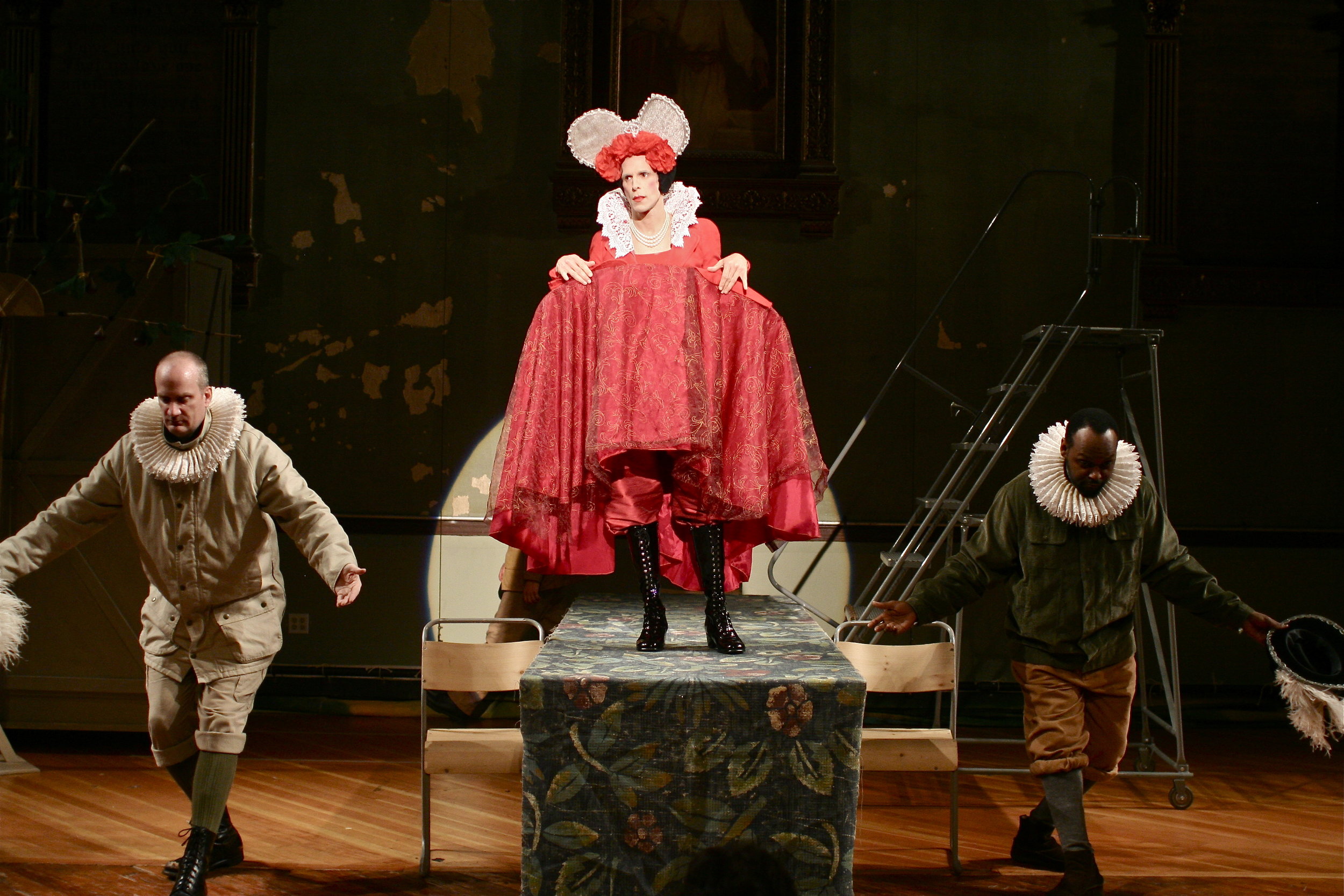
Title
Passion Play
Author
Sarah Ruhl
What’s It All About
Sarah Ruhl’s Passion Play takes us behind the scenes of three communities attempting to stage the death and resurrection of Christ: one in 1575 northern England, just before Queen Elizabeth outlaws the ritual; one in 1934 Oberammergua, Bavaria, as Hitler is rising to power; and one in Spearfish, South Dakota, from the time of Vietnam through Reagan’s presidency. In each period, the players grapple in different ways with the transformative nature of art, and politics are never far in the background, as Queen Elizabeth, Hitler, and Reagan each appear, played by a single commanding actor.
Why You Should Do This Play
There is no play that speaks to the power of art and storytelling more intricately or beautifully than Passion Play. What’s captivating about this piece is how each of the historically charged eras use theatre and how government and societal agenda interacts with people’s personal artistic agenda. While still maintaining her signature lyricism, Ruhl is able to navigate highly relevant political issues without being heavy-handed or didactic. Instead each act engrosses you in the specific stories of these community players, and it is only at the end that you feel the heavy impact of all three sections together. Passion Play will leave you with a lot of thoughts and a new appreciation for the tradition of the stage.
This play also perfectly speaks to community theatre and the importance of bringing people together with creation. We have a plethora of backstage comedies that poke fun at the amateur show model, but this is one of the few tributes to community theatre, reminding us of its deep global history.
The Particulars
8M, 3F. Actors play their counterparts in each respective era. Each act of the three acts takes place in a different era/location entirely, but given the themes and poeticism, the set can be flexible and as bare as it needs to be. Running time can be over three hours.
Need To Know
The length of the play may seem daunting, with three meaty acts, but note this passage in Ruhl’s Author’s Note:
“Ideally, Passion Play (Parts One, Two, and Three) would be performed all together in one evening (it should run about three hours plus intermissions) or else in rotating repertory. Together, the three parts form a cycle play – alone, they do something different, but they can technically stand alone. If in repertory, I suggest doing Parts One and Two on one night, and Part Three on the next. If the resources of one theater are too limited to produce the entire cycle, I can imagine two theaters in one city collaborating to put the cycle up together. In the original guild productions of the Passion, the carpenters in the village would handle the crucifixion scene and the bakers would handle the Last Supper. Perhaps our theatrical communities could borrow from the primitive guild model.”
And so this play should not be shied away from and is a perfect opportunity for theatrical collaboration and bringing communities together!
To purchase a copy of Passion Play, click here, and to learn more about licensing a production, click here.

“The Impossible Dream” – An Anthem of Hope

In the Spirit: Plays and Musicals Based on A Christmas Carol

